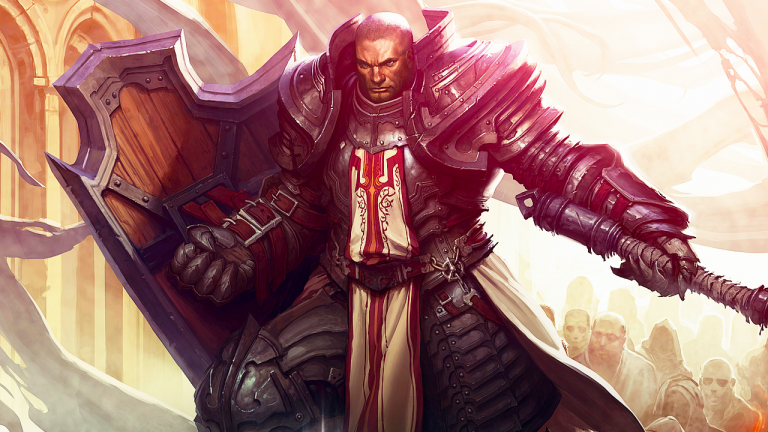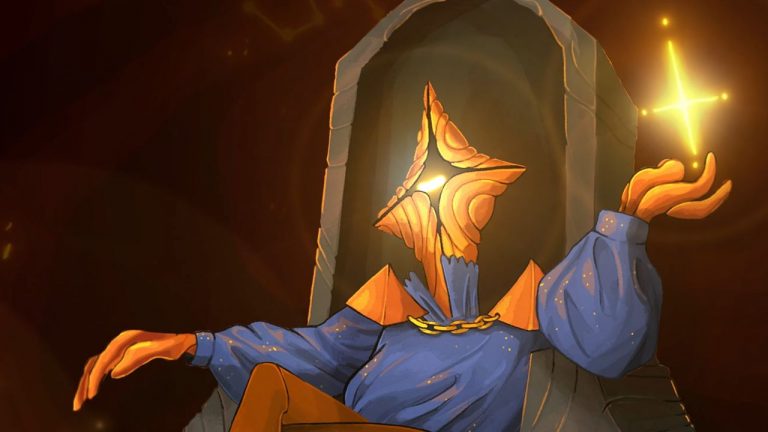LitRPG books have taken the fantasy world by storm, offering readers a unique blend of traditional storytelling and game-like elements. At the heart of many great LitRPG novels lies a well-crafted magic system, often serving as the backbone of the narrative and character progression.
These intricate magic systems do more than just add flavor to the story. They’re the secret sauce that keeps readers turning pages, eagerly following the protagonist’s journey from novice to master. By mirroring the mechanics of role-playing games, these systems create a sense of measurable progress that’s deeply satisfying for readers.
In this article, we’ll explore some standout LitRPG titles known for their complex and engaging magic systems. Each book offers a unique take on how magic and gameplay can intertwine, creating worlds that are both fantastical and logically consistent.
So, grab your spell book, check your mana reserves, and let’s dive into the magical realms of LitRPG!
Sufficiently Advanced Magic by Andrew Rowe: Where Puzzles Meet Power
Andrew Rowe’s “Sufficiently Advanced Magic” throws readers into a world where magical prowess is tested through a series of increasingly difficult challenges within an enigmatic tower. This setup immediately hooks readers, promising a journey filled with mystery, danger, and magical discovery.
The story follows Corin Cadence, a young man determined to climb the Serpent Spire, a magical tower filled with deadly traps and powerful monsters. Corin’s goal? To find his long-lost brother and unlock the secrets of his own magical abilities.
A Magic System That Levels Up
Rowe’s magic system in “Sufficiently Advanced Magic” is a masterclass in blending RPG mechanics with traditional fantasy elements. The magic here isn’t just a tool; it’s a complex, multi-layered system that grows alongside the characters.
At its core, the magic revolves around “attunements” – magical marks that grant specific powers. These attunements can be strengthened through use and practice, mirroring the leveling systems found in many RPGs. This progression-based approach gives readers a tangible sense of growth as Corin and his companions face increasingly difficult challenges.
The spells and abilities in the book are diverse and well-defined. From summoning ethereal swords to manipulating the very fabric of mana, each magical feat feels both wondrous and grounded in the world’s internal logic. Rowe doesn’t shy away from detailing the mechanics behind these spells, giving readers a deep understanding of the magic’s limitations and potential.
Puzzle-Solving and Strategy: The Heart of Magic
What truly sets “Sufficiently Advanced Magic” apart is how it integrates puzzle-solving and strategy into its magical framework. The Serpent Spire isn’t just a gauntlet of monsters to be defeated; it’s a labyrinth of magical puzzles that must be deciphered.
These puzzles require characters to use their magical abilities in creative ways, often combining different attunements or thinking outside the box. This approach turns every encounter into a mini-game of sorts, challenging both the characters and the readers to find innovative solutions.
The strategic element extends to combat as well. Battles in the book aren’t won solely through brute magical force. Instead, they require careful planning, resource management, and clever application of spells. This adds a layer of depth to the action scenes, making them feel more like tactical encounters than simple magical slugfests.
Why It Stands Out: A Perfect Blend of Logic and Wonder
“Sufficiently Advanced Magic” stands out in the LitRPG genre for several reasons. First, its magic system strikes a perfect balance between wonder and logic. While the magical feats are awe-inspiring, they never feel arbitrary or unexplained. This consistency allows readers to fully immerse themselves in the world without constantly questioning its rules.
Secondly, the book’s focus on gradual skill improvement mirrors the satisfaction of character progression in RPGs. As Corin unlocks new abilities and strengthens his attunements, readers share in his sense of accomplishment. This creates a strong connection between the reader and the protagonist, driving engagement throughout the story.
Lastly, the integration of puzzles and strategy into the magic system adds a unique flavor to the narrative. It’s not just about who has the most powerful spells; it’s about who can use their abilities most creatively. This encourages readers to engage with the story on a deeper level, theorizing about possible solutions and anticipating future challenges.
Dungeon Crawler Carl by Matt Dinniman: Chaos, Comedy, and Creative Magic
In stark contrast to the structured magic of “Sufficiently Advanced Magic,” Matt Dinniman’s “Dungeon Crawler Carl” throws readers into a world of magical chaos and dark humor. This post-apocalyptic LitRPG turns Earth into a deadly dungeon, forcing survivors to battle their way through floors of increasing difficulty for the entertainment of alien viewers.
The story follows Carl, an ordinary guy thrust into extraordinary circumstances, and his snarky cat companion, Donut. Together, they must navigate the dungeon’s dangers, outsmart their competitors, and try to stay alive in a world gone mad.
Magic in Madness: A System of Controlled Chaos
The magic system in “Dungeon Crawler Carl” is as unpredictable and wild as the story itself. Unlike many LitRPG novels where magic follows strict rules from the outset, here the system evolves and changes as Carl progresses through the dungeon floors.
At its core, the magic in this world is tied to the dungeon itself, manifesting in the form of skills, abilities, and items that Carl can acquire. What makes it unique is the sheer variety and often absurd nature of these magical elements. From summoning ghostly ducks to creating fields of killer muffins, the possibilities seem endless and often hilariously impractical at first glance.
However, beneath the surface chaos lies a method to the madness. As Carl delves deeper into the dungeon, patterns begin to emerge. Skills can be combined in unexpected ways, and seemingly useless abilities become crucial in specific situations. This gradual revelation of the system’s underlying logic keeps readers engaged, always wondering what new twist will come next.
Adaptation and Innovation: The Key to Magical Success
One of the most compelling aspects of the magic in “Dungeon Crawler Carl” is how it forces characters to adapt and innovate constantly. With each new floor bringing unforeseen challenges and restrictions, Carl must find creative ways to use his growing arsenal of bizarre abilities.
This emphasis on adaptability extends to the story’s RPG elements as well. Unlike games where character builds are often set in stone, Carl’s progression is fluid and reactive. He must constantly reassess his strengths and weaknesses, making tough choices about which skills to develop based on immediate needs and long-term strategy.
The result is a magic system that feels alive and dynamic. It’s not just about accumulating power, but about using what you have in clever and unexpected ways. This approach keeps the action fresh and exciting, as readers never know quite what to expect from Carl’s next magical solution.
Why It Stands Out: Unpredictability Meets Character Growth
“Dungeon Crawler Carl” stands out in the LitRPG genre for several key reasons. First, its magic system perfectly complements the story’s tone and setting. The chaotic and often absurd nature of the magic mirrors the insanity of the dungeon world, creating a cohesive and immersive reading experience.
Secondly, the evolving nature of the magic system keeps readers on their toes. Unlike some LitRPG novels where the rules are laid out clearly from the start, “Dungeon Crawler Carl” reveals its magical framework gradually. This creates a sense of discovery and excitement as readers learn alongside Carl, uncovering new possibilities with each chapter.
Lastly, the magic system in this book serves as more than just a power fantasy. It’s a tool for character development, pushing Carl to grow not just in terms of raw magical ability, but in creativity, adaptability, and resilience. This deeper integration of magic and character arc elevates the story beyond simple dungeon crawling.
The humor in “Dungeon Crawler Carl” also deserves special mention. The often ridiculous nature of the magic system provides ample opportunity for comedy, balancing out the darker elements of the story. This blend of humor and horror, powered by an unpredictable magic system, creates a unique reading experience that sets the book apart in the crowded LitRPG field.
He Who Fights With Monsters by Shirtaloon: A Tapestry of Magical Innovation
Shirtaloon’s “He Who Fights With Monsters” plunges readers into a vibrant world teeming with gods, monsters, and magical intrigue. This LitRPG series follows Jason Asano, an ordinary guy from Earth who finds himself transported to a realm where magic is as common as breathing.
The story kicks off with Jason’s sudden arrival in this new world, armed with nothing but his wit and a newfound ability to see magical auras. From there, we follow his journey as he navigates the dangers and opportunities of this magical realm, growing from a bewildered outsider to a force to be reckoned with.
A Magic System of Endless Possibilities
The magic system in “He Who Fights With Monsters” is a sprawling tapestry of possibilities, blending traditional fantasy elements with innovative concepts. At its core, the magic revolves around the manipulation of essence, the fundamental energy that permeates all things in this world.
What sets this system apart is its emphasis on individual expression and creativity. While there are established magical disciplines and techniques, the true power lies in how a person combines and applies these elements. This approach allows for a wide range of magical styles, from straightforward combat magic to more esoteric and utility-focused abilities.
Jason’s particular magical journey centers around his unique essence ability, which allows him to absorb and manipulate the magical essence of others. This power serves as a gateway to endless magical experimentation, as Jason can potentially learn and adapt any ability he encounters.
RPG Elements: Leveling Up in a Magical World
The RPG elements in “He Who Fights With Monsters” are seamlessly integrated into the magic system and the world at large. Characters have measurable attributes and skills that can be improved through practice and experience, mirroring the progression systems found in many video games.
However, Shirtaloon takes this concept a step further by tying magical growth directly to personal development. As Jason faces challenges and overcomes obstacles, his magical abilities evolve in ways that reflect his experiences and choices. This creates a deeply satisfying sense of progression that goes beyond simple number crunching.
The book also introduces the concept of “awakenings,” major milestones in a character’s magical development that unlock new powers and possibilities. These awakenings serve as exciting plot points, driving the narrative forward while also providing clear goals for Jason’s magical journey.
Balancing Act: Combat, Exploration, and Personal Growth
One of the strengths of “He Who Fights With Monsters” is how it balances different aspects of the LitRPG experience. While combat plays a significant role in the story, it’s far from the only focus. The magic system supports a wide range of activities, from exploration and crafting to social interactions and problem-solving.
This versatility is reflected in Jason’s approach to magic. Rather than focusing solely on combat prowess, he often seeks out creative solutions to challenges, using his abilities in unexpected ways. This emphasis on lateral thinking and adaptability keeps the magic system feeling fresh and exciting throughout the series.
Why It Stands Out: A Living, Breathing Magical World
“He Who Fights With Monsters” stands out in the LitRPG genre for several reasons. First, its magic system strikes an excellent balance between structure and flexibility. While there are clear rules and limitations, there’s also ample room for creativity and innovation. This creates a sense of wonder and possibility that keeps readers engaged.
Secondly, the way the magic system intertwines with character development is particularly well-executed. As Jason grows and changes as a person, his magical abilities evolve to match. This creates a deeply satisfying character arc that feels organic and earned.
Lastly, the sheer depth and breadth of the magical world Shirtaloon has created is impressive. From the various magical disciplines to the complex interplay of essence and reality, there’s always something new to discover. This depth encourages readers to dive deep into the world, theorizing about magical concepts and eagerly anticipating new revelations.
Dragon Heart by Kirill Klevanski: Where East Meets West in Magical Harmony
Kirill Klevanski’s “Dragon Heart” series offers a unique blend of Eastern and Western fantasy traditions, creating a rich tapestry of martial arts and mystical energies. This LitRPG saga follows Hadjar, a young prince cast down from his position and forced to climb back to power through sheer determination and magical prowess.
Set in a world inspired by wuxia and xianxia traditions, “Dragon Heart” presents a universe where martial arts and magic are inextricably linked. The story begins with Hadjar’s fall from grace and follows his journey to become a legendary cultivator, mastering both physical and magical arts.
The Path of Cultivation: A Martial Magic System
The magic system in “Dragon Heart” is deeply rooted in the concept of cultivation, a practice of harnessing internal energy to strengthen body, mind, and spirit. This system seamlessly blends martial arts techniques with magical abilities, creating a unique fusion that sets the series apart in the LitRPG genre.
At its core, the magic revolves around the manipulation of qi, the life force that flows through all living beings. Cultivators like Hadjar learn to harness this energy, using it to perform supernatural feats of strength, speed, and even reality manipulation at higher levels.
What makes this system particularly intriguing is its structured progression. Cultivators advance through clearly defined realms, each offering new abilities and challenges. This structure provides a clear sense of growth and achievement, mirroring the level-up systems found in many RPGs.
The Dragon Within: Unique Magical Bloodlines
Adding another layer of complexity to the magic system is the concept of bloodlines. In the world of “Dragon Heart,” certain individuals inherit magical abilities from powerful ancestors. Hadjar’s titular “Dragon Heart” is one such bloodline, granting him unique powers and potential.
This bloodline system adds an element of destiny and inheritance to the magic, creating interesting plot dynamics as characters discover and learn to harness their hidden powers. It also allows for a wide variety of magical abilities, keeping the system fresh and exciting as new bloodlines are introduced.
Combat and Cultivation: The Heart of Progression
In “Dragon Heart,” combat and magical progression are deeply intertwined. Battles are not just tests of raw power, but complex dances of technique, strategy, and magical ability. As Hadjar grows stronger, the combat scenes evolve, showcasing increasingly spectacular displays of martial and magical prowess.
The cultivation aspect of the magic system also plays a crucial role in character development. As Hadjar and other characters progress through the cultivation realms, they face not just external challenges, but internal ones as well. Each advancement requires not only increased power, but also greater understanding of oneself and the world.
This focus on internal growth alongside external power creates a satisfying progression arc. Readers get to experience not just Hadjar’s increasing strength, but also his maturing worldview and deepening understanding of the magical arts.
Why It Stands Out: A Harmonious Fusion of Traditions
“Dragon Heart” stands out in the LitRPG genre for several key reasons. First, its unique blend of Eastern and Western fantasy elements creates a fresh and exciting magical world. The fusion of martial arts and mystical energies offers a different flavor compared to many Western-centric LitRPG novels.
Secondly, the structured nature of the cultivation system provides a clear sense of progression that many LitRPG fans crave. The well-defined realms and stages of advancement give readers concrete goals to anticipate, driving engagement throughout the series.
Lastly, the way the magic system is tied to personal growth and self-discovery adds depth to the narrative. It’s not just about becoming more powerful; it’s about understanding oneself and one’s place in the world. This philosophical aspect elevates the story beyond simple power fantasy, offering readers food for thought alongside magical excitement.
The “Dragon Heart” series showcases how LitRPG can draw inspiration from diverse cultural traditions to create unique and engaging magical worlds. Its harmonious blend of martial arts and mystical cultivation offers a fresh take on the genre, proving that there’s always room for innovation in the realm of magical systems.
Jake’s Magical Market by J.R. Mathews: Shuffling the Deck of Reality
J.R. Mathews’ “Jake’s Magical Market” introduces readers to a world where reality itself has been reshaped by the whims of capricious gods. In this LitRPG adventure, Earth is transformed overnight into a magical realm where power comes in the form of cards, and those who can wield them effectively become the new masters of this changed world.
The story follows Jake, an ordinary guy who finds himself thrust into extraordinary circumstances when he discovers a rare and powerful card. As he learns to navigate this new card-based reality, Jake must outwit rivals, confront dangerous monsters, and unravel the mysteries behind the world’s transformation.
A Deck-Building Approach to Magic
The magic system in “Jake’s Magical Market” is truly unique, combining elements of deck-building games with traditional fantasy magic. In this world, magical abilities are contained within cards, which can be collected, traded, and used to cast spells or summon creatures.
What sets this system apart is its expansive variety and constant evolution. As Jake progresses through the story, he continually acquires new cards, each offering different powers and possibilities. This creates a sense of excitement and discovery, as readers never know what new ability Jake might unlock next.
The card-based magic also introduces an element of strategy and resource management. Jake must carefully consider which cards to include in his deck, balancing offensive and defensive capabilities, utility spells, and synergies between different cards. This adds a layer of depth to the magic system, rewarding careful planning and creative thinking.
Building a Magical Business
One of the most intriguing aspects of “Jake’s Magical Market” is how it incorporates economic elements into its magic system. As the title suggests, Jake doesn’t just use his cards for combat – he also builds a business around them, buying, selling, and trading cards to increase his power and influence.
This economic angle adds a fresh perspective to the LitRPG genre. Jake’s success isn’t just measured in terms of raw magical power, but also in his ability to navigate the complexities of a magical marketplace. This creates interesting challenges and opportunities, as Jake must balance his personal growth with the demands of running a business in a dangerous and unpredictable world.
Evolving Magic in an Evolving World
The magic system in “Jake’s Magical Market” is notable for how it grows and changes alongside the protagonist and the world itself. As Jake delves deeper into the mysteries of the cards and the gods who created them, he uncovers new layers of complexity in the magic system.
This gradual reveal keeps the magic feeling fresh and exciting throughout the story. New card types, rare abilities, and unexpected interactions between different magical effects ensure that there’s always something new for Jake – and the reader – to discover.
Why It Stands Out: Endless Possibilities in a Card
“Jake’s Magical Market” stands out in the LitRPG genre for several reasons. First, its card-based magic system offers a unique and engaging approach to spell casting and magical combat. The combination of collectible card game mechanics with traditional fantasy elements creates a system that feels both familiar and fresh.
Secondly, the integration of economic elements adds depth and complexity to the magical world. By making the acquisition and trading of magical cards a central part of the story, Mathews creates a rich ecosystem for his characters to navigate, offering opportunities for conflict and growth beyond simple combat scenarios.
Lastly, the ever-expanding nature of the card system allows for constant innovation and surprise. With each new card Jake acquires, the possibilities for magical combinations and strategies grow exponentially. This keeps the magic system feeling dynamic and exciting, even as the story progresses.
The Magic of Intricate Systems in LitRPG Books
As we’ve explored these five remarkable LitRPG titles, it’s clear that a well-crafted magic system can elevate a story from good to unforgettable. Each of these books offers a unique take on how magic can be integrated into a game-like world, creating experiences that are both fantastical and logically consistent.
From the puzzle-solving progression of “Sufficiently Advanced Magic” to the chaotic adaptability of “Dungeon Crawler Carl,” the creative essence manipulation in “He Who Fights With Monsters,” the martial cultivation of “Dragon Heart,” and the deck-building strategy of “Jake’s Magical Market,” these novels showcase the incredible diversity possible within the LitRPG genre.
What ties these different approaches together is their commitment to depth and consistency. In each case, the authors have created magic systems that go beyond simple power fantasies. These are intricate, well-thought-out systems that invite readers to engage deeply with the world, theorizing about magical concepts and eagerly anticipating new developments.
Moreover, these magic systems serve as more than just window dressing for the plot. They’re integral to character development, driving the protagonists to grow not just in power, but in wisdom and understanding. The challenges posed by mastering these magical arts push characters to their limits, revealing their true nature and potential.
For fans of the LitRPG genre, these books offer a masterclass in how to blend magical elements with game-like progression in a way that feels both innovative and satisfying. They prove that with creativity and careful world-building, the possibilities for magical systems in literature are truly limitless.
As the LitRPG genre continues to evolve, we can look forward to even more innovative and engaging magic systems. These five books have set a high bar, challenging future authors to push the boundaries of what’s possible when magic meets gameplay. For readers, the future of LitRPG looks brighter – and more magical – than ever.
The post LitRPG Books with Intricate Magic Systems: Where Magic Meets Gameplay appeared first on LitRPG Reads.












